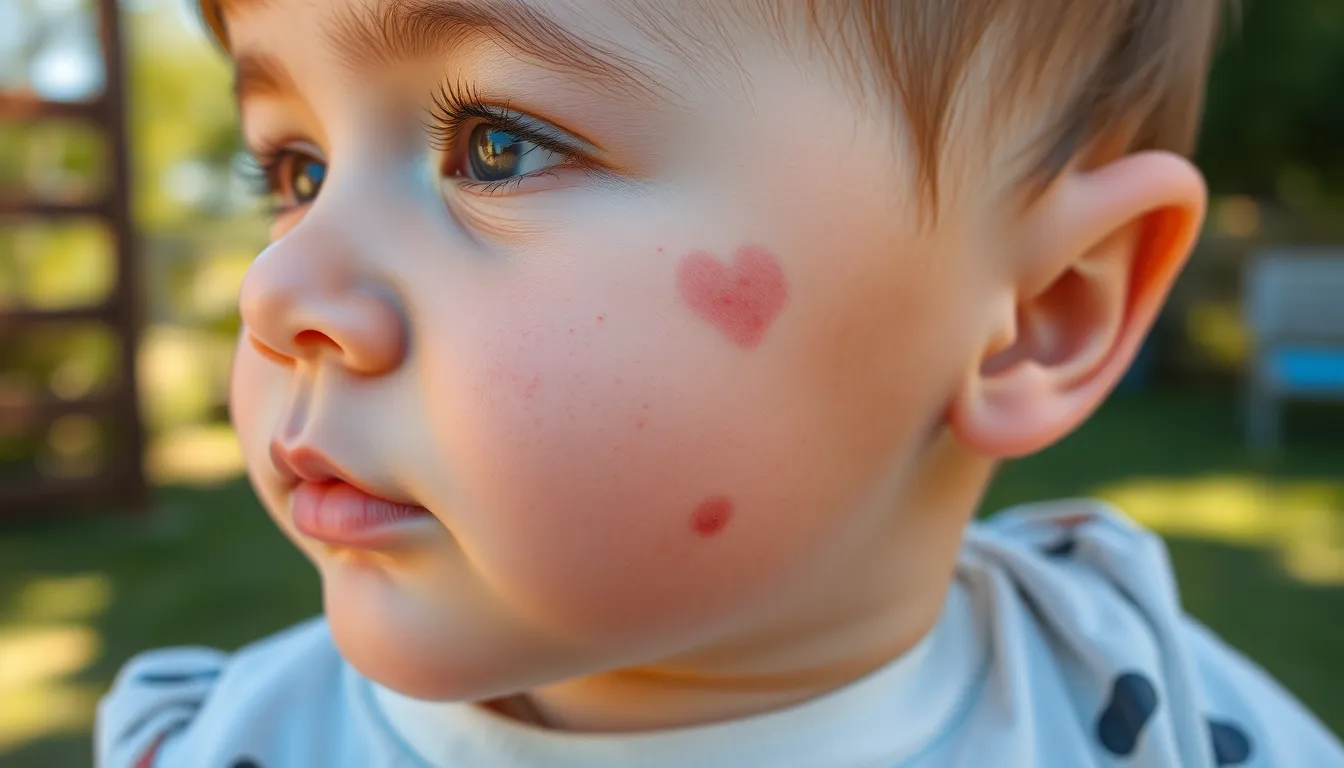Birthmarks are fascinating features that many people carry from birth or develop shortly after. These unique skin markings come in various shapes, sizes, and colors, each with its own story to tell. While some birthmarks are merely cosmetic, others have deeper meanings rooted in cultural beliefs and folklore.
Understanding the different types of birthmarks can shed light on their significance. From hemangiomas to café-au-lait spots, each type has its own characteristics and potential implications. Exploring these variations not only satisfies curiosity but also helps individuals embrace their uniqueness and the narratives behind their skin. Dive into the world of birthmarks and discover what they might reveal about identity and heritage.
Table of Contents
ToggleOverview of Birthmarks
Birthmarks are skin abnormalities that manifest in various shapes, sizes, and colors. They typically appear at birth or shortly after. Different types of birthmarks fall into two main categories: vascular and pigmented.
Vascular Birthmarks
- Hemangiomas: These are raised, red marks caused by an abnormal collection of blood vessels. They often fade over time.
- Port-wine stains: Flat, reddish-purple marks that do not fade and can vary significantly in size and location. They result from dilated blood vessels.
- Stork bites: Light-colored marks that usually occur on the back of the neck or eyelids. They often fade with age.
Pigmented Birthmarks
- Café-au-lait spots: Light brown spots that can appear anywhere on the body. While common, having multiple spots may indicate underlying conditions.
- Moles: Small, dark brown or black spots formed by clusters of pigmented cells. They may develop or change over time.
- Nevus simplex: Also known as angel’s kiss or salmon patch, these flat, pink marks often fade away completely by the time the child reaches one year of age.
Understanding birthmarks enhances appreciation for their unique characteristics and the cultural stories they may represent. The significance of each type can vary greatly across cultures, from symbolic meanings in folklore to a celebration of individuality.
Types of Birthmarks

Birthmarks categorize into two main types: vascular and pigmented. Each type features distinct characteristics and meanings.
Vascular Birthmarks
Vascular birthmarks arise from abnormal blood vessel formation. Common examples include:
- Hemangiomas: These are raised, red birthmarks often appearing on the face, scalp, or torso. They typically enlarge during the first year of life but may fade or disappear by early childhood.
- Port-Wine Stains: These flat, red or purple marks originate from dilated capillaries. Port-wine stains vary in size and usually remain throughout a person’s life. Cultural significance often ties them to uniqueness and individuality.
- Stork Bites: Often found on the back of the neck or eyelids, stork bites appear as light pink marks. They fade significantly during childhood, symbolizing innocence in many cultures.
Pigmented Birthmarks
Pigmented birthmarks result from clusters of pigment cells. Key types include:
- Café-au-Lait Spots: These light brown marks can appear anywhere on the body. One or two spots are common, but multiple spots may indicate a genetic condition like neurofibromatosis.
- Moles: These are small, dark spots caused by pigment accumulation. Most people develop varying numbers of moles throughout their lives, and though they are usually harmless, they can hold different meanings in various cultures regarding beauty and character.
- Nevus Simplex: Commonly known as angel’s kisses if found on the eyelids or the back of the neck, these light pink marks often fade in early childhood. In many cultures, they signify protection and good fortune.
Common Birthmark Meanings
Birthmarks carry meanings that vary across cultures and medical contexts, providing insights into personal identity and health.
Significance in Different Cultures
Birthmarks hold unique meanings in various cultures.
- Cultural Symbolism: In some cultures, a birthmark signifies good luck or signifies a protective aura.
- Folklore Associations: Certain societies believe that the location of a birthmark correlates with past life’s experiences or character traits.
- Ritual Importance: In various traditions, birthmarks undergo specific rituals to enhance protective properties or remove negative energy.
Medical Implications
Birthmarks also have crucial medical considerations.
- Monitoring Changes: Changes in size or color may indicate potential health issues, requiring dermatological evaluation.
- Genetic Conditions: Multiple café-au-lait spots can signal genetic disorders, such as Neurofibromatosis.
- Cosmetic Procedures: Some individuals seek treatment for birthmarks that impact confidence or self-image, opting for laser therapy or surgical options.
Treatment Options
Treatment options for birthmarks vary based on type, size, and the need for intervention. Medical advice is essential when changes occur in a birthmark’s appearance.
When to Seek Medical Advice
Individuals should seek medical advice if a birthmark changes color, grows larger, or develops irregular borders. Such changes can signal potential health concerns, especially with pigmented birthmarks. Regular monitoring is crucial for early detection of any underlying issues. Consulting a dermatologist provides professional insights on whether the birthmark requires treatment or further observation.
Natural Remedies
Natural remedies for birthmarks can include topical applications such as aloe vera, which may soothe the skin and promote healing. Essential oils like lavender and tea tree oil are also believed to aid in skin health when used consistently. While these remedies may not remove birthmarks, they can enhance skin condition. It’s important to note that natural remedies may vary in effectiveness, and consulting a healthcare professional before trying them is advisable to ensure safety and suitability.
Birthmarks are more than just skin markings; they hold cultural significance and personal meaning. From the unique characteristics of vascular and pigmented types to their interpretations across various cultures, each birthmark tells a story. They can symbolize protection, good fortune, or even aspects of one’s identity.
While many birthmarks are harmless, awareness of their potential medical implications is essential. Regular monitoring and consultation with a dermatologist can ensure that any changes are addressed promptly. Embracing the beauty and significance of birthmarks allows individuals to appreciate their uniqueness while also considering their health and well-being.






